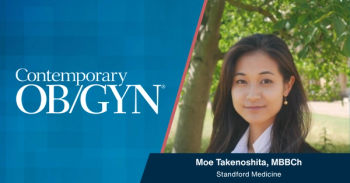
Antenatal Steroids
SMFM 27th Annual Meeting 2007
If you are having trouble viewing the Windows Media video,
read the abstract:
Transcript:
Alix Boyle: Hi, this is Alix Boyle reporting for OBGYN.net. We are here at the Society for Maternal Fetal Medicine in San Francisco at the 27th annual meeting and we are here with Dr. Ron Wapner from Columbia University. Tell us about your study, Dr. Wapner.
Ronald Wapner, MD: Well, the study we presented today is the culmination of a five-year evaluation to answer the question of when a woman is about to deliver prematurely. Normally, we give her steroids because it accelerates the lung maturation of the babies and they do better in the nursery. However, we know that the steroids only last for about seven to ten days so the question is, should we repeat the steroids every seven to ten days to make sure that every baby who is born has the maximal exposure at the time of delivery? For a period of time, seven or ten years ago, every woman who had an episode of pre-term labor was being exposed to repeat steroids. The study we presented today evaluated what the risks and benefits are of giving those repeat steroids were.
Alix Boyle: Why would you say the study is important?
Ronald Wapner, MD: The study was important for a couple of reasons. The first part of this study, we presented two years ago and that was the acute immediate outcomes. We demonstrated that the babies who were exposed to multiple courses of steroids actually did do better. They had a decreased incidence of a number of lung problems, they had a much more stable vascularity, they really did better. Then this was repeated by the people in Australia and they found the same thing. However, at the same time we found there were improvements in the lungs, we found the babies who were exposed to repetitive courses of steroids were actually smaller and there was a higher percentage of them who were actually so small, they were in less than the tenth percentile. So we needed to ask the question, what does this mean in the long-term? Because the immediate term gives us some answers, but what we are really trying to learn is how to give the healthiest babies for the long-term, so that is what the evaluation was about today.
Alix Boyle: What were the most important measurements in this study?
Ronald Wapner, MD: In this study, we looked at a couple of things. We looked at the weight because, indeed, these children were smaller at birth and we asked the question, are they going to remain small? Are they going to have smaller head circumferences or will they have catch-up growth? So that is one of the things we looked at. Then the second and probably the most critically important, we looked at their development and we looked at that in two ways: we did a neurologic examination to look for signs of any impact on the developing brain and we did the Bayley test which is the specific test of neuro development. So those really were the most important outcomes that we looked at.
Alix Boyle: Are there adverse consequences to giving repeated courses of steroids?
Ronald Wapner, MD: Well, we found that there is a high suspicion that that may be the case. As far as the early parameters, like were the babies just as healthy – yeah, they were, the group who had repeat steroids were just as healthy as the others. Did they catch up on growth? Absolutely, there was no difference at two or three years of age between those who were exposed to a number of courses of steroids and those who were exposed to a single course. The Bayley exams, which do the neuro development, were the same. So that was a lot of really reassuring information, that we were not doing any harm.
The problem was that we also saw an increased incidence of cerebral palsy in the groups who were exposed to repeat doses. Now, it is important to point out that this was a trend and it was not statistically significant. We would need to evaluate twice as many babies to say this with certainty. But it is a warning and it is a warning for a couple reasons: A, we found an increased frequency but B, in animal studies; they see the exact same thing. Animals exposed to repeat courses of steroids in utero had a number of changes in their brain that would be consistent with our findings. Also, the neonatologists have given steroids immediately after birth to try to prevent chronic lung disease and they found in those babies, who would essentially be the same age except they would be in the nursery and our fetuses would be in the mom, but those babies in the nursery who were exposed to steroids also had a significant, almost a five-fold, increased risk of cerebral palsy. So our finding with what we know from animals and what we know from neonates certainly raises enough concern that we believe that, until we can have reassuring information which other trials may show in the future, really you should minimize the exposure of steroids.
Alix Boyle: How should the steroids be limited?
Ronald Wapner, MD: That is really an almost impossible question. I can give you one man’s opinion. I think that the vast majority of the problems we solve were in babies who were exposed to a lot of courses, four or five courses. We don’t have enough information to say that it is safe if you get one or two courses, but certainly it seems that the less you give, the better off you are. So I think if the baby looks like she or he is going to deliver prematurely and you give steroids, if they don’t deliver but then they come back and delivery is now imminent and still premature, I think that you might want to give another dose of steroids because the beneficial effects really seem to be clear. I say that with a couple caveats. Number one, if you have gotten to 32 weeks of pregnancy, the risk of any morbidity or mortality is so low, you really can’t justify repeating it because of the potential safety issues. If alternatively the baby is still very premature and it is just going to be one more course, I think the benefits would outweigh the risks. Now, again, we need more science to prove that, but I think with all the information we have right now, that seems to be a very rational approach.
Newsletter
Get the latest clinical updates, case studies, and expert commentary in obstetric and gynecologic care. Sign up now to stay informed.
















